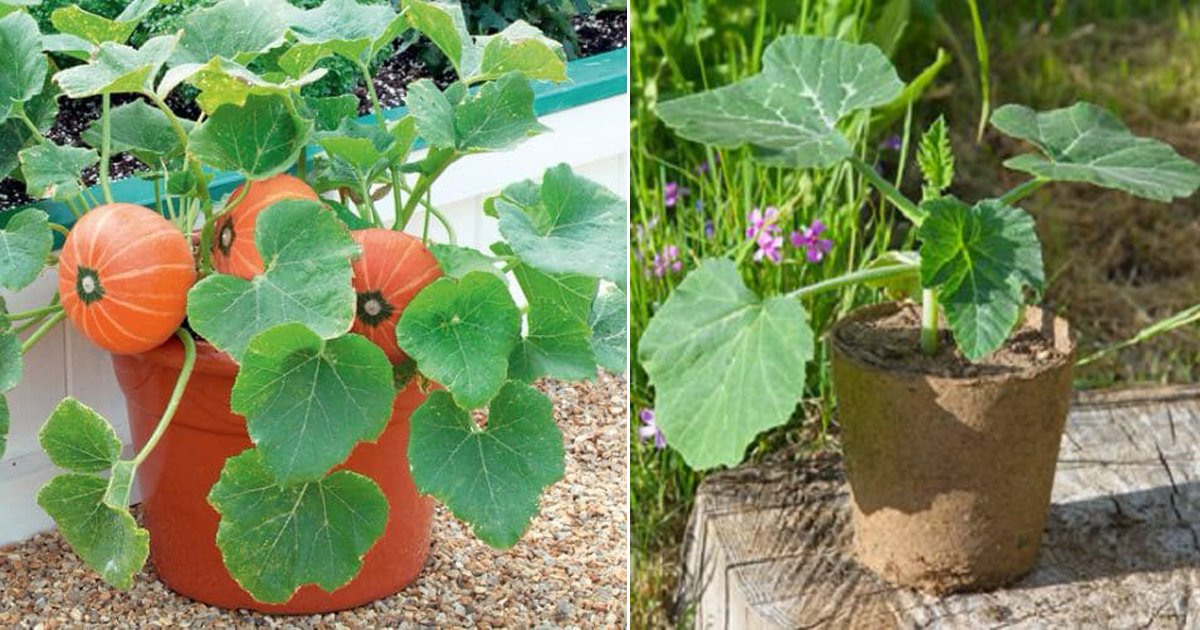Growing pumpkins in containers can be a fun and rewarding gardening project, especially if you have limited space. In this comprehensive guide, you’ll learn how to successfully cultivate pumpkins in containers, from choosing the right container and pumpkin variety to planting, care, and harvesting.
Choosing the Right Container:
- Size: Select a container with a volume of at least 15 gallons to provide ample space for the pumpkin plant’s roots to grow.
- Depth: Ensure the container is at least 18 inches deep to accommodate the pumpkin’s deep root system.
- Drainage: Drill holes in the container’s bottom to ensure proper drainage and prevent waterlogging.

Selecting the Right Pumpkin Variety:
- Container-Friendly Varieties: Choose compact or bush varieties such as ‘Small Sugar,’ ‘Baby Boo,’ or ‘Jack Be Little,’ which are well-suited for container gardening.
- Consider Space: Keep in mind the space limitations of your container and choose a variety that fits its size.
Soil and Planting:
- Soil Mix: Use a well-draining potting mix enriched with organic matter. Incorporate compost or aged manure to provide essential nutrients.
- Planting Seeds: Sow 2-3 pumpkin seeds approximately 1 inch deep in the center of the container. Once seedlings emerge, thin to the healthiest one.
- Spacing: If planting multiple seeds, space them at least 18-24 inches apart to allow for proper growth.
Watering and Sunlight:
- Watering: Maintain consistent soil moisture without overwatering. Water deeply and allow the soil to slightly dry between watering sessions.
- Sunlight: Place your container in a location that receives a minimum of 6-8 hours of direct sunlight each day to promote healthy growth.
Care and Maintenance:
- Support: As the pumpkin vines grow, provide a trellis or support structure near the container. Train the vines to climb the support to improve airflow and prevent rot.
- Fertilization: Apply a balanced, slow-release fertilizer or a diluted liquid fertilizer every 2-3 weeks to provide essential nutrients.
- Pruning: Trim excess foliage and smaller fruits to redirect the plant’s energy toward the main pumpkin for better growth.
Pest and Disease Control:
- Pests: Regularly inspect your pumpkin plant for common pests like aphids, squash bugs, or cucumber beetles. Use organic insecticidal soap or neem oil to control infestations.
- Diseases: Be vigilant for powdery mildew, a common pumpkin ailment. Promote good airflow around the plant and consider using fungicides if necessary.
Harvesting:
- Timeline: Pumpkins typically mature in 75-100 days, depending on the variety and growing conditions.
- Signs of Maturity: Look for a pumpkin with a deep, consistent color, a hard rind, and a dried stem. When tapped, the pumpkin should sound hollow.
- Harvesting: Use pruning shears to cut the pumpkin from the vine, leaving a few inches of stem attached.

